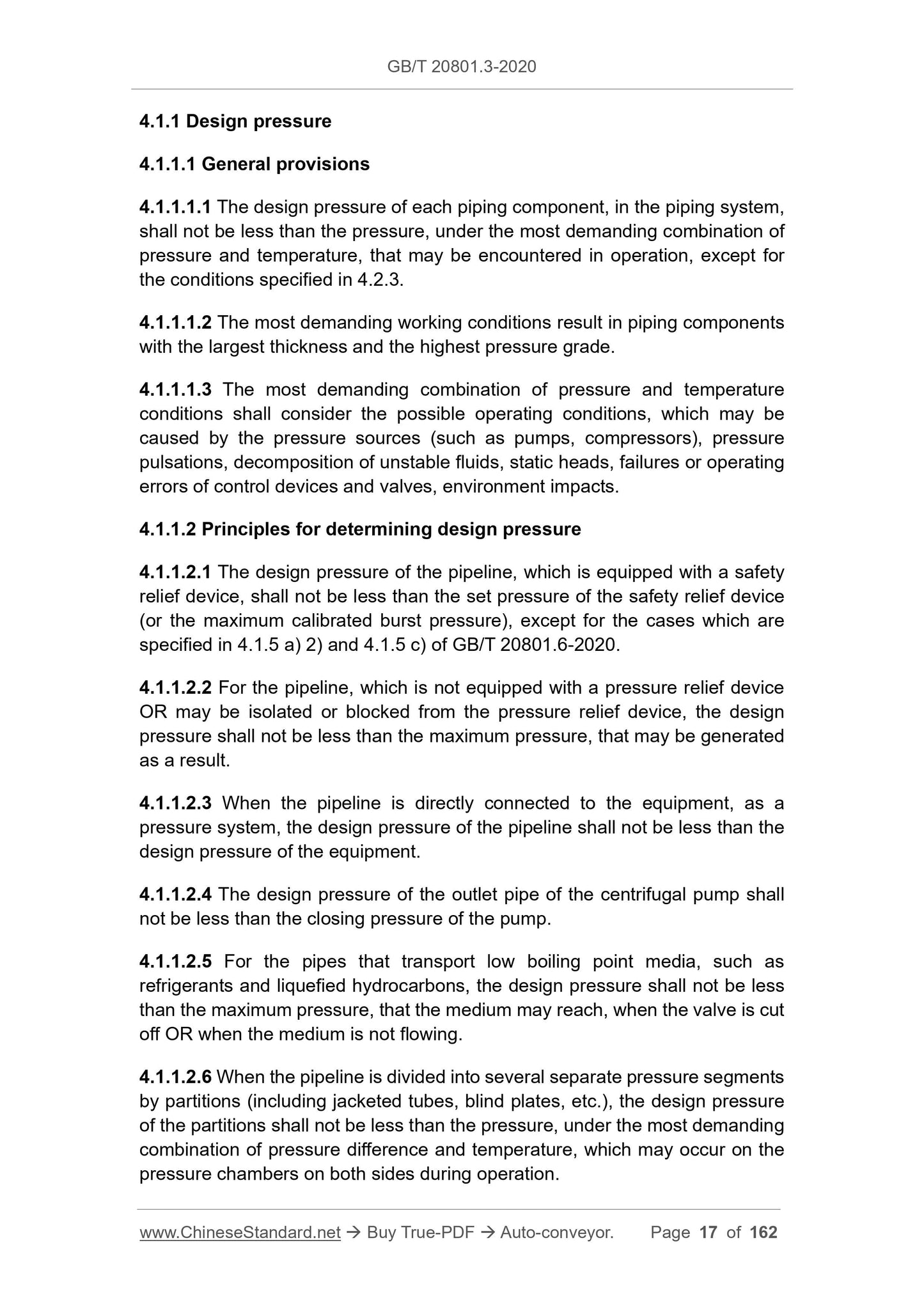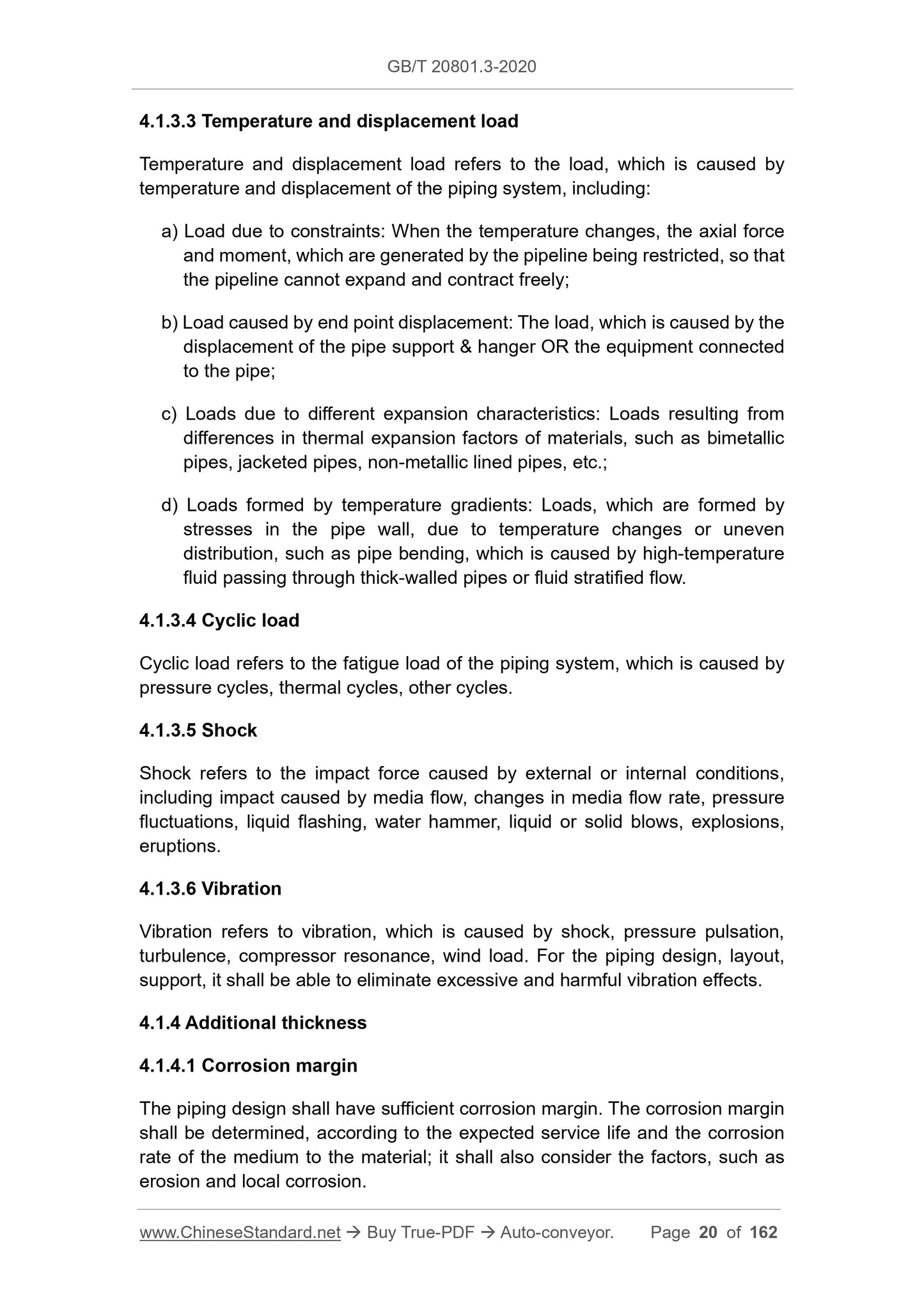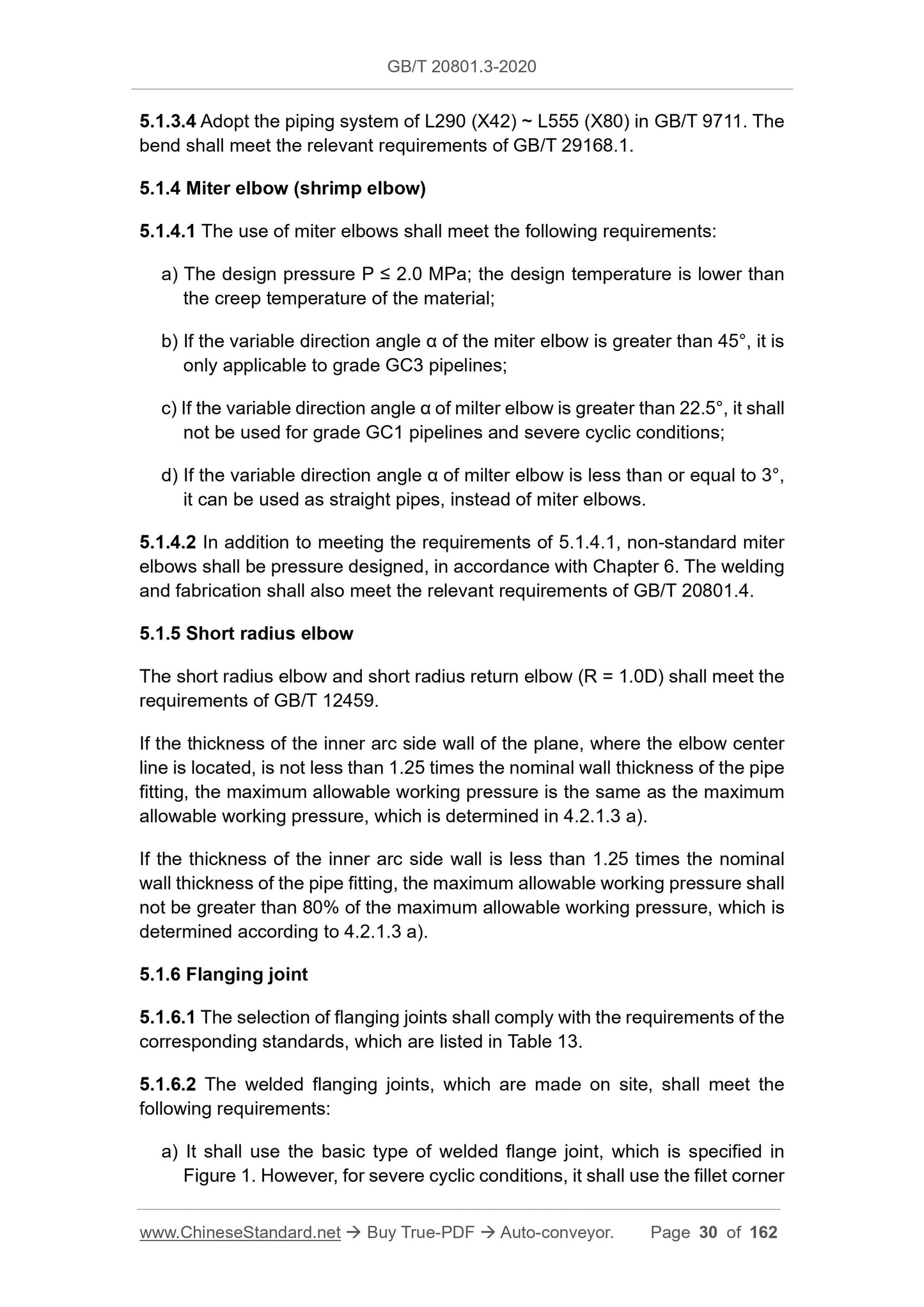1
/
of
11
www.ChineseStandard.us -- Field Test Asia Pte. Ltd.
GB/T 20801.3-2020 English PDF (GB/T20801.3-2020)
GB/T 20801.3-2020 English PDF (GB/T20801.3-2020)
Regular price
$1,330.00
Regular price
Sale price
$1,330.00
Unit price
/
per
Shipping calculated at checkout.
Couldn't load pickup availability
GB/T 20801.3-2020: Pressure piping code - Industrial piping - Part 3: Design and calculation
Delivery: 9 seconds. Download (and Email) true-PDF + Invoice.Get Quotation: Click GB/T 20801.3-2020 (Self-service in 1-minute)
Newer / historical versions: GB/T 20801.3-2020
Preview True-PDF
Scope
This Part of GB/T 20801 specifies the basic requirements for the design andcalculation of pressure pipelines. These basic requirements include design
conditions, design criteria, piping components and their pressure design,
pipeline stress analysis, etc.
This Part applies to the design and calculation of pressure piping, which is
defined within the scope of GB/T 20801.1.
Basic Data
| Standard ID | GB/T 20801.3-2020 (GB/T20801.3-2020) |
| Description (Translated English) | Pressure piping code - Industrial piping - Part 3: Design and calculation |
| Sector / Industry | National Standard (Recommended) |
| Classification of Chinese Standard | J74 |
| Classification of International Standard | 23.040 |
| Word Count Estimation | 98,917 |
| Date of Issue | 2020-11-19 |
| Date of Implementation | 2021-06-01 |
| Older Standard (superseded by this standard) | GB/T 20801.3-2006 |
| Regulation (derived from) | National Standard Announcement No. 26 of 2020 |
| Issuing agency(ies) | State Administration for Market Regulation, China National Standardization Administration |
Share





















